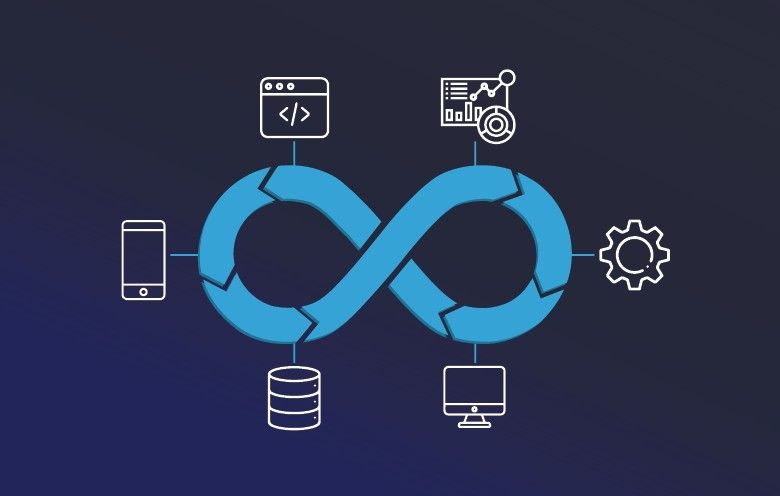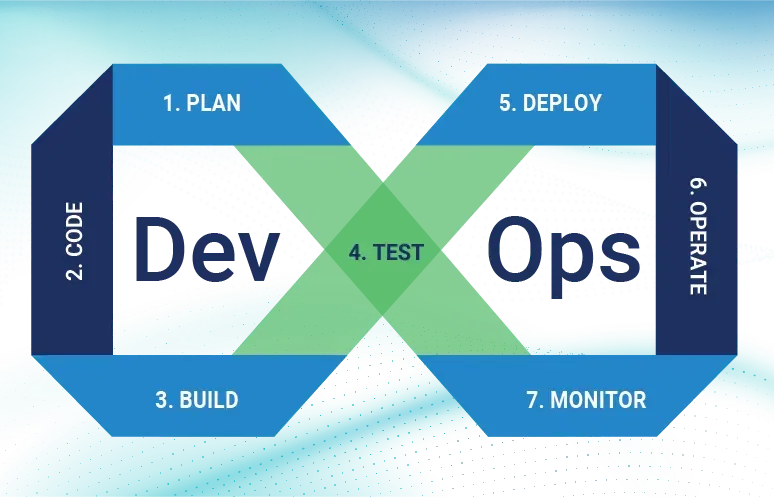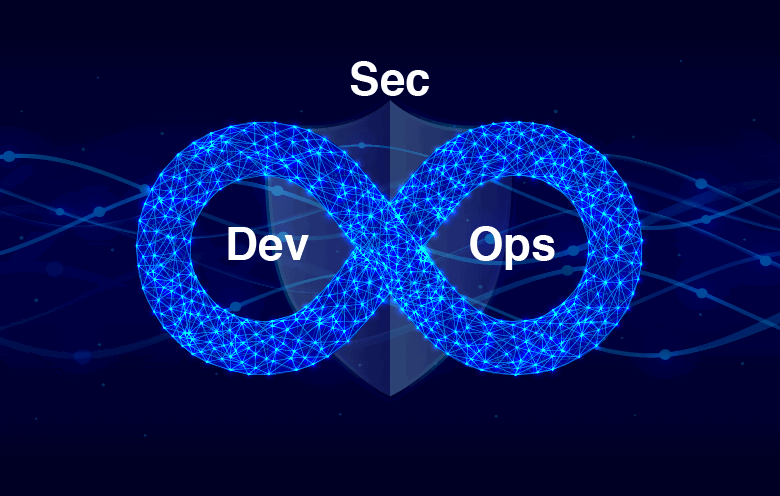Every time when a software project delivery is delayed or there are bugs in the product, the root cause seems to be untraceable. Hence, nobody, not even the development team has a deeper understanding of what went wrong. However, to drive efficiency and enhance the reliability of your software development process, it is important to understand the challenges beforehand. This requires you to build a systematic roadmap that will allow you to address the issues effectively.
Some of the major challenges faced during the software development journey are:
- Undefined scope of the project
- Numerous software iterations
- Unexpected bugs and lack of understanding of them
- Security threats
To competently handle such problems, you need to adopt a DevOps culture. DevOps is the best-suited way to perform application design, development and deployment. You can streamline the workflow for a secure end-to-end software development process from design to delivery. A few of the benefits of leveraging a DevOps culture are:
- Quick response to changing needs
- Better agility for security
- Automated quality assurance testing
- Early detection and mitigation of vulnerabilities
- Enhanced communication between teams
Implementing DevOps processes helps you to increase the performance of your product and create value for your teams as well as customers. It allows you to streamline coordination between developers and the operations team, and enhance their productivity.
Six steps for a successful DevOps process optimization
1. Finding the root cause of the breakdown
It is inevitable to avoid any breaks in the process. While it is important to get things going back and running quickly, it is equally necessary to discover the cause behind the break. So, instead of resolving only the immediate issue at hand, it is imperative to address issues that will inevitably follow if left unseen. Identify and address fundamental reasons for the breakdown to avoid unplanned delay.
2. Starting small
Today’s applications have intricate architectures. Hence, it is important to determine the factors that might cause problems and isolate them separately so that they can be addressed efficiently. This will help you to achieve a faster resolution. Also, rather than solving all the issues altogether, take one piece of faulty code, and try to find the problems/bugs in that part and solve them.
3. Prioritizing tickets through context
It is crucial to prioritize tasks according to the requirements. Using spreadsheets or software like JIRA can help you to keep track of the time and progress of each of the tasks. Often, you will be required to juggle between the tasks. A proper system in place allows you to do that smoothly without hampering the entire process.
4. Confirm development status in real-time
Every developer should be able to access information or status on the development in real-time. You need to make sure that you receive the most up-to-date information about the application. Also, you need to ensure that you are on the same page as others on the team.
5. Manage user expectations, one step at a time
It is not necessary to take up all the enhancements simultaneously. Users will have a variety of expectations and you need to provision those, but not at the cost of operations. Often, while taking care of these suggestions or features, you tend to overdo them. Hence, it is advisable to take a few changes in each release cycle and offer the best possible solution to your customers.
6. Continuous feedback
Every time you make a change, it is important that you monitor its impact and make adjustments as per the needs. Modifying small aspects of the application can hugely affect the performance and stability. Therefore, continuous feedback is the key to achieve the appropriate solution required to improve product quality.
Use case to better understand the DevOps process
Let’s take an example of a company that wants to develop a smart application. With DevOps in place, they will have a system like JIRA where all the teams involved in the project will be able to coordinate. They can also share their feedback or requirements and log the progress of the tasks that they are assigned to. Once the company has strategized a roadmap, employees can go through it and decide the timeline according to their roles. However, the timeline can be disturbed by unexpected errors or bugs. This can be fixed by finding the root cause of the issues and tending to them immediately. This will allow the company to avoid long delays and instead quickly move on to the next step in the process.
The company also has a plan to divide the software development cycle into smaller parts and implement the changes in four stages:
1. Development
2. Quality assurance (QA)
3. Testing environment
4. Live environment
This allows them to start small by implementing the code in one environment and checking the output. By doing so, they will be able to address the consequences more aptly if the code doesn’t work as expected. Once satisfied with the result, they will move on to the release of that code on the testing environment. If there are any changes at this stage, they can take them one at a time. On the other hand, the company will use tools like Jenkins to automate testing parallelly. Meanwhile, they can move forward with further development. If the timeline is affected due to iterations, the employees can log and manage their time using a common system and coordinate or plan the next tasks accordingly.
While deploying the code to the live environment for users, the company can notify their customers about a scheduled downtime. This allows them to be aware of the time required to implement the code. Hence, this entire DevOps cycle will help the company to accelerate its development course and time-to-market. Implementing DevOps will also ensure enhanced productivity. This can be achieved by better coordination between various teams and continuous feedback from the members. This will not only allow the company to rationalize the workflow but also improve the quality of the product, resulting in better customer satisfaction.

DevOps Managed Services for agile development
For organizations that want to accelerate their DevOps transformation, DevOps Managed Services is a perfect solution. Enterprises can manage their software delivery foundation centrally by leveraging Managed Service Providers (MSPs) and cloud infrastructures like CloudBees and JIRA.
For an efficient DevOps implementation process, you need a DevOps managed service provider for configuring the web hosting applications. This will ensure the following factors:
- Speed and efficiency
- Compliance
- Security
DevOps Managed Services offerings
Infrastructure management
It enables you to automate provisioning and leverage release management as well as orchestration capabilities.
DevOps monitoring
It empowers the visibility of applications and facilitates the monitoring of deployment metrics.
Deployment automation
From version to release, manage deployment pipelines in a fully automated environment.
Release orchestration
Create model-driven pipelines that integrate with different tools, for rapid, reusable and predictable releases
Here’s a checklist for implementing a successful DevOps strategy.
Way to go with DevOps managed services
Undoubtedly, developing and deploying software solutions is overwhelming and stressful. However, with DevOps managed services, you can bring development and operations together for better collaboration and simplification of the development cycle.
Deploying an application is not a cakewalk. You need to be prepared with robust DevOps strategies and should be able to implement DevOps best practices. This allows you to securely deploy applications. Hence, you need an adept DevOps management team. To assure that your software development cycle runs flawlessly, you can hire DevOps experts. Get in touch with our DevOps engineers to get started with your DevOps journey.



